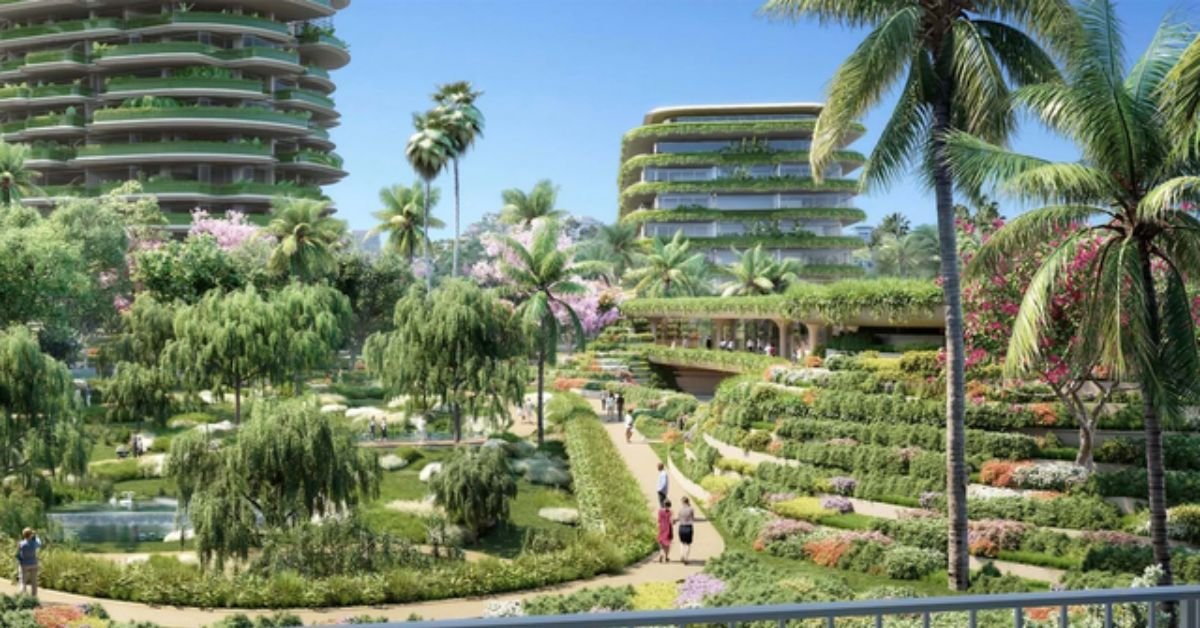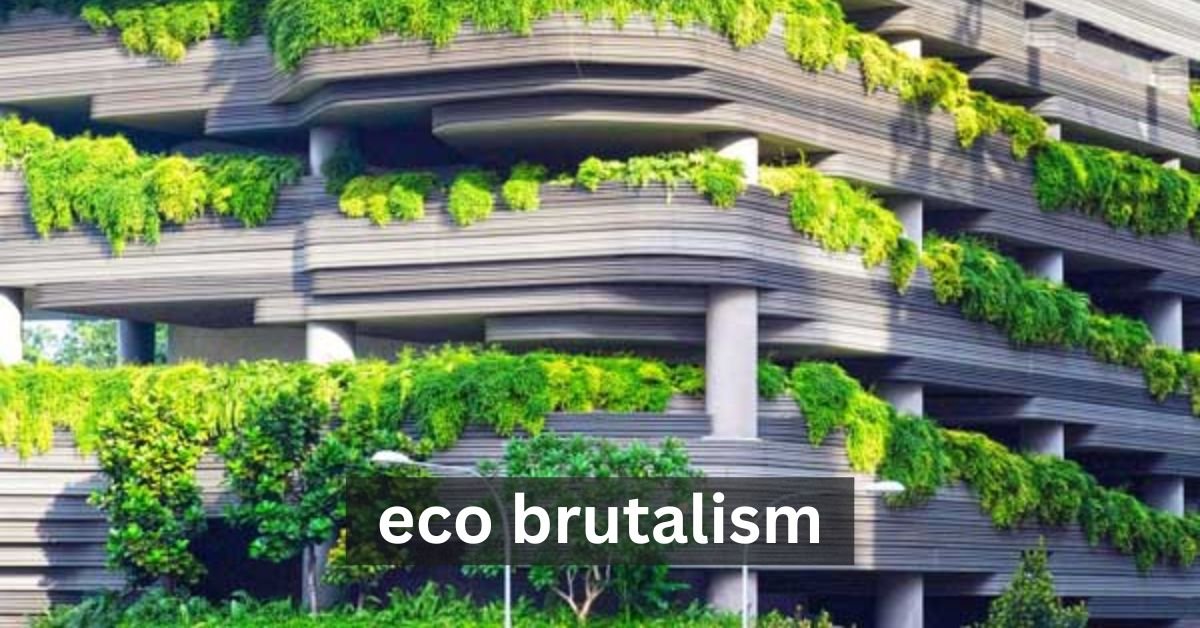Eco brutalism is a modern architectural style that blends the raw, robust aesthetic of traditional brutalism with sustainable and eco-friendly design principles. It is characterized by the use of exposed concrete structures and the integration of green elements, such as green roofs and vertical gardens, to create a harmonious connection between urban settings and nature.
In an era where environmental consciousness is paramount, eco brutalism offers a unique approach to urban design. By emphasizing sustainability and eco-friendly practices, this architectural style not only minimizes the carbon footprint of buildings but also enhances the overall quality of life for occupants and their surroundings.
Historical Background of Brutalism

Origins of Brutalism
Brutalism emerged in the mid-20th century, primarily as a response to the need for rebuilding urban centers after World War II. The style emphasized the use of raw concrete and structural elements, often in large, block-like forms, to create functional and imposing structures.
Influence of Le Corbusier and Unite d’Habitation
One of the pioneers of brutalism, Le Corbusier, contributed significantly to the architectural landscape with his residential design, the Unite d’Habitation. This design featured exposed concrete surfaces, integrating modernist principles with a functional, robust aesthetic that laid the foundation for subsequent brutalist architecture.
The Rise of Eco Brutalism
Transition to Sustainable Practices
The evolution of eco brutalism reflects the architectural community’s shift towards sustainability. Modern architects are now blending traditional brutalist features with eco-conscious elements, such as green roofs, rainwater harvesting systems, and vertical gardens, to create structures that minimize environmental impact.
Examples of Eco Brutalist Structures Around the World
Tiing Boutique Resort, Bali, Indonesia: This resort exemplifies eco brutalism by integrating green roofs and vertical gardens with concrete structures, creating a unique blend of urban sophistication and natural beauty.
Mamun Residence, Chittagong, Bangladesh: A prime example of sustainable living, this residence incorporates green elements, allowing for a harmonious coexistence with nature while maintaining the bold, raw aesthetic of brutalism.
Jungle House, Guaruja, Sao Paulo: This eco-brutalist design offers a seamless transition between the raw concrete structures and the surrounding natural landscape, enhancing the overall experience for its occupants.
Key Features of Eco Brutalism
Integration of Green Elements
Eco brutalism integrates various green elements, such as green roofs and vertical gardens, to provide ecological benefits and aesthetic appeal. These elements help reduce the carbon footprint of the buildings by promoting natural air circulation and filtering pollutants.
Use of Raw Concrete and Sustainable Materials
While traditional brutalism primarily focused on raw concrete, eco brutalism introduces sustainable materials and technologies to minimize environmental impact. These might include recycled materials, energy-efficient insulation, and sustainable wood alternatives.
Benefits of Eco Brutalism

Environmental Impact
Eco brutalism significantly reduces the carbon footprint associated with traditional brutalist architecture. By incorporating green elements and sustainable materials, these structures contribute to cleaner air and a healthier environment.
Aesthetic and Functional Advantages
The bold, raw concrete structures of eco brutalism offer a unique visual contrast with the surrounding greenery, creating a striking yet harmonious aesthetic. Functionally, these designs provide efficient use of space and natural ventilation, promoting comfort and well-being.
Challenges and Criticisms
Compatibility with Surroundings
The integration of green elements in eco brutalism requires careful consideration to ensure compatibility with the surrounding environment. If not managed well, the green elements can compete with the building’s structural integrity.
Environmental Trade-offs and Carbon Footprint
While eco brutalism aims to minimize environmental impact, some critics argue that the production and use of concrete in these structures still have a significant carbon footprint. Finding a balance between aesthetic appeal and environmental responsibility remains a challenge.
Modern Applications and Trends
Eco Brutalism in Urban Design
Eco brutalism is increasingly becoming a popular choice in urban design, offering an innovative approach to blending modernity with nature. Architects are now experimenting with vertical greenery and rooftop gardens in high-rise buildings to maximize green space and improve air quality.
Examples in Contemporary Architecture
Modern eco-brutalist designs, such as those found in contemporary art galleries and public spaces, continue to demonstrate the versatility and appeal of this architectural style. These spaces provide an immersive experience, where visitors can enjoy the raw aesthetic of concrete alongside natural elements.
Future Prospects and Innovations

Sustainable Building Technologies
The future of eco brutalism looks promising with the incorporation of advanced building technologies, such as smart green roofs and energy-efficient insulation. These technologies will continue to enhance the overall environmental benefits of eco-brutalist structures.
Potential for Eco Brutalism in the Future
With growing awareness of environmental issues, eco brutalism is expected to become more widespread in the coming years. Architects and urban planners are likely to embrace this style to create eco-friendly, sustainable, and aesthetically pleasing buildings.
Frequently Asked Questions
What is eco brutalism?
Eco brutalism is a modern architectural style that combines the raw, concrete aesthetic of traditional brutalism with sustainable and eco-friendly elements, such as green roofs, vertical gardens, and rainwater harvesting systems, to create environmentally conscious structures.
How does eco brutalism benefit the environment?
Eco brutalism reduces the carbon footprint of traditional brutalist architecture by incorporating green elements that filter pollutants, promote natural air circulation, and minimize the use of non-sustainable materials. This approach helps to create a healthier environment.
What are some examples of eco brutalist structures around the world?
Examples include Tiing Boutique Resort in Bali, Indonesia; Mamun Residence in Chittagong, Bangladesh; Jungle House in Guaruja, Sao Paulo; and Art Villa in Costa Rica, where the integration of green elements with raw concrete showcases the eco-brutalist design.
What are the challenges of eco brutalism?
Some challenges include ensuring compatibility with surrounding environments and managing the environmental trade-offs, such as the carbon footprint associated with concrete production.
How is eco brutalism influencing modern urban design?
Eco brutalism is increasingly used in urban design to blend modernity with nature. Architects are incorporating green roofs, vertical gardens, and other green elements in high-rise buildings to create eco-friendly urban spaces that improve air quality and enhance the overall living experience.
Conclusion
Summary of Key Points
Eco brutalism offers a powerful alternative to traditional architecture by blending raw concrete structures with eco-friendly elements. This approach not only reduces environmental impact but also provides a unique aesthetic experience for occupants and visitors.
Future Outlook of Eco Brutalism in Architecture
The future of eco brutalism holds great promise, with continued advancements in sustainable building technologies and a growing emphasis on environmental responsibility. This architectural style will likely play a pivotal role in shaping the future of urban design and sustainable living.
Stay in touch to get more updates & alerts on Anonib! Thank you



